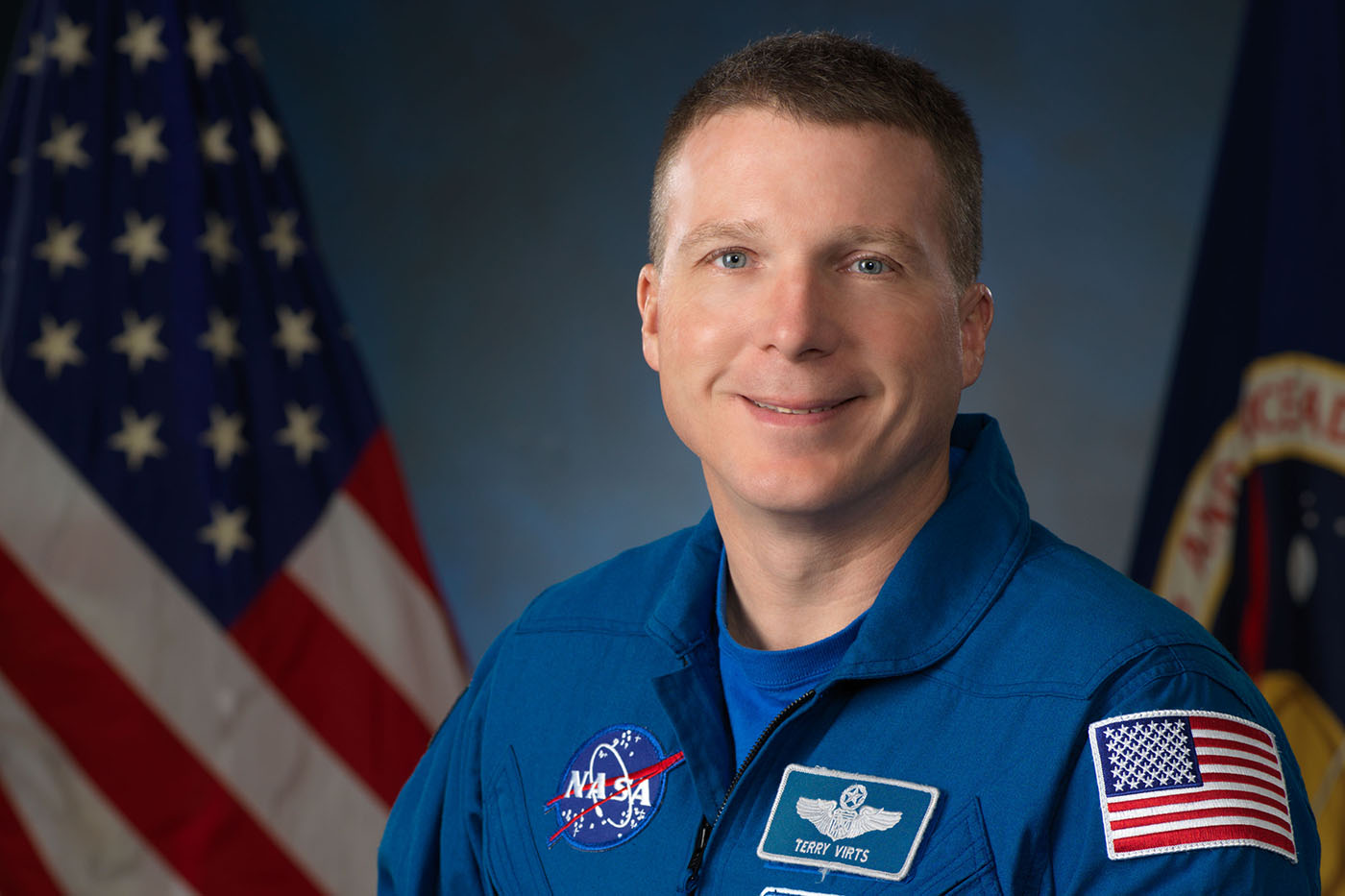Audible “oohs” and “aahs” filled the Performing Arts Center (PAC) Jan. 23 as Terry W. Virts, former US Air Force Colonel and Space Station Commander, took the audience on a journey of their own through the spectacular images he captured while aboard the International Space Station.
Virts began his talk, hosted by National Geographic and titled “View From Above,” with the story of his childhood, how he got to NASA and the comedic moments that happened along the way. He kicked off the presentation with a photo of a small boy and a rocket three times his size.
“When I was a little kid, it was what I wanted to do,” Virts said. “The first book I read was about Apollo.”
Virts talked about his parents and how they supported his dreams of becoming an astronaut.
Virts said he began at the United States Air Force Academy, where he worked his way through getting his pilot wings and completing basic fighter training and formal training. He eventually landed a job as an Experimental Test Pilot, a position in which he logged over three thousand hours in more than forty different aircrafts – all while maintaining a “really bad haircut,” he joked.
Virts was stationed all across the United States and even spent some time abroad in Korea and Germany.
“Living around the planet gave me a great perspective that helped me be a better astronaut,” Virts said.
Virts added that he believed his traveling is the reason he was chosen among his colleagues for the position at NASA. He said that some of his colleagues discouraged him to apply at the time and told him to wait until he had gained more experience. But rather than heeding their doubts, he applied. He was then chosen to be the youngest working astronaut at the time.
Virts said this was when he would learn the “most profound lesson” of his career.
“Don’t tell yourself no,” Virts said.
Aside from showing everyone that “space flight is awesome,” Virts said his true objective is to inspire and to educate. “The bigger the dream, the harder the work,” he said.
“I also wanted to be a shortstop for the Baltimore Orioles growing up, but it quickly became obvious that that wasn’t gonna happen,” Virts said.
Virts’ dedication and perseverance did, however, lead him to what he described as “the proudest moment of my life as an American,” referring to the first time he walked up to the space station.
Virts went on to discuss life in space. By sharing his experiences, Virts said he seeks not only to inspire people, but also to educate them on topics like global wealth, environmental issues and even political controversy. He intends to “use [his] space missions as the framework and the background for these deeper lessons.”
Virts said an important moment for him in space occurred while he was working with a team that consisted of an Italian astronaut, two Russian astronauts and two American astronauts — himself included. He said it was an interesting dynamic working with the Russian astronauts while tensions between the two countries were boiling up. However, Virts added that in the space station, all boundaries and country lines were meaningless amidst the vast terrain of space.
During this time, the alarm for the deadly chemical ammonia went off, alarming Virts and the other crew members. His team had advised him and the others beforehand that if they ever did smell ammonia, not to worry about it because, “You’re going to die.”
Thankfully, it ended up being a false alarm. While the frenzy was unwinding, however, former Russian Deputy Prime Minister Dmitry Rogozin personally contacted the Americans, saying they could stay safely on the Russian side for as long as they needed. Virts was moved by this. He described the moment as “how cooperation should happen,” both then and in today’s political climate.
Being in space and looking down at the Earth puts things in perspective, Virts said. While most of the photos he displayed were gorgeous scenes of space and earth from afar, some of them showed the increasing effects of pollution and deforestation on the planet. Some images captured a whole city covered in brown smog, others the ruin of the rainforests.
Virts said he hopes his photos have an impact not only on people’s daily habits, but on future policy regarding the planet. He said he noticed the patterns of light and dark at night and how they correlated to global wealth as he passed over different geographical locations. In South Korea, lights illuminate the night sky, bursting from different city centers such as Seoul, Busan and Incheon. North Korea on the other hand, is apparently harder to spot. This is because there is only one noticeable light coming from the area: the home of supreme leader Kim Jong-Un. The rest of the country lies in darkness.
“Some people are living in the light, and some people are living in the dark,” Virts said.
For now, not many people can relate to the experiences Colonel and Astronaut Terry Virts has had in space. In his own words, directed towards those of us rooted to the Earth, it is something “you really can’t imagine.”
There is, however, a lot to learn from what he has seen and done for a better and brighter future.

